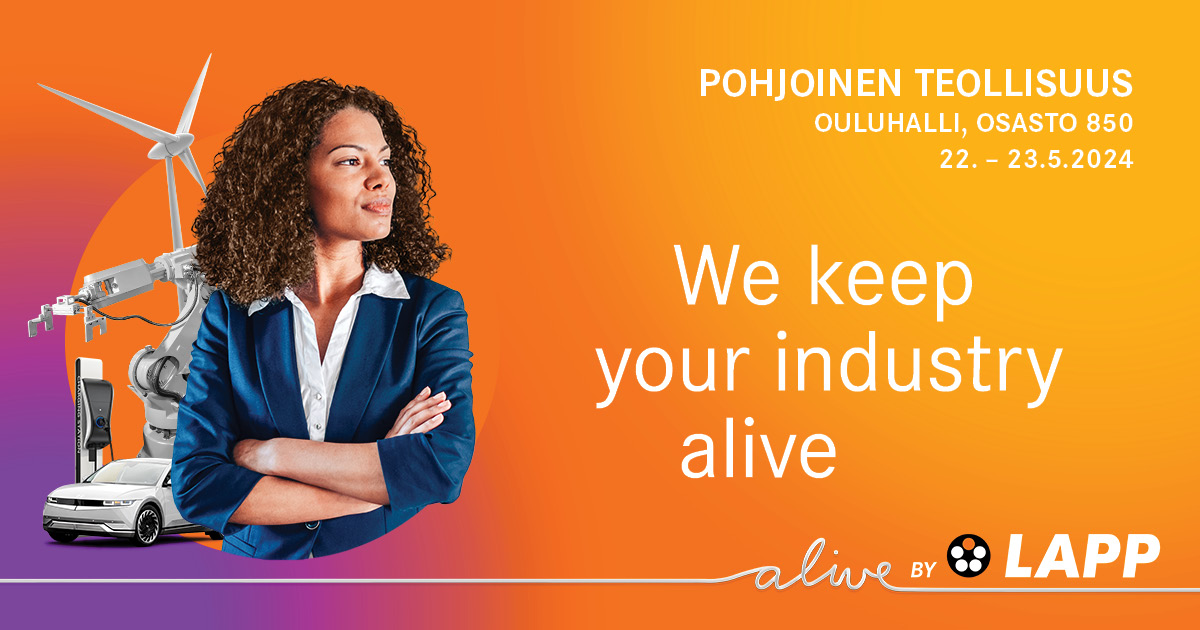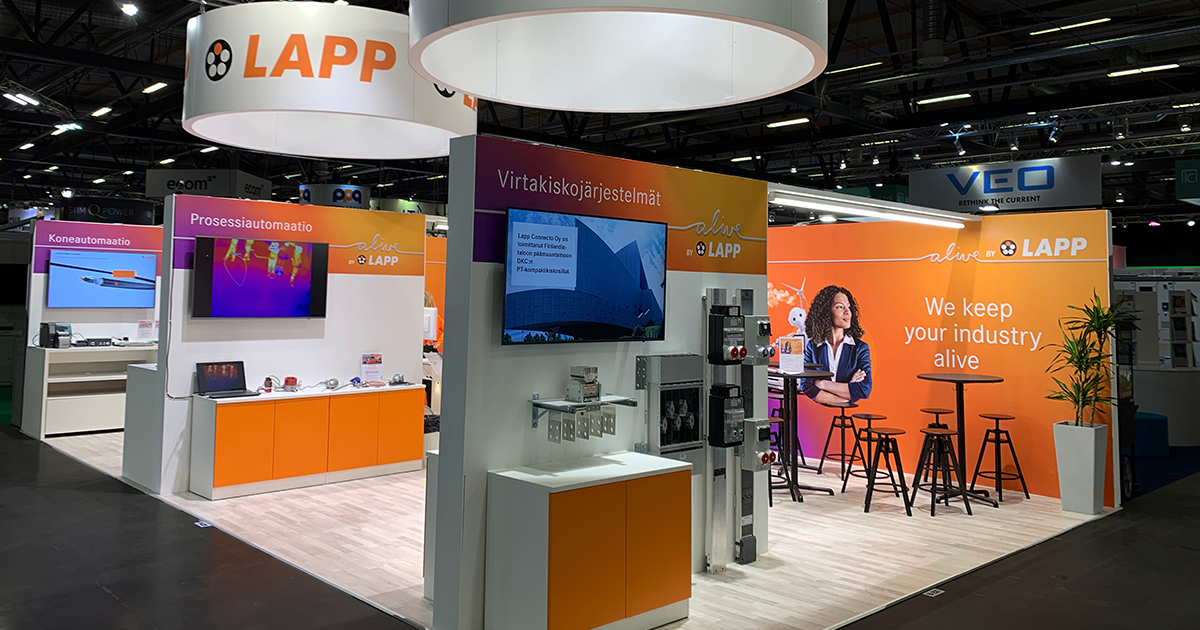Sloganimme alive by LAPP mukaisesti kutsumme sinut osastollemme 850.
Don’t panic about digitalisation
Katso kaikki uutiset ja tapahtumat

There have been many complaints about the snail’s pace of digitalisation. But faster is not always better. Maybe our idea of what represents digital progress is misplaced.
Yet another invitation to a conference about the digital future. I feel like I could spend time every day attending conferences and listening to keynotes about this subject. When there are visionaries and evangelists everywhere you look, it is easy to become disoriented. Their bold predictions make it appear as if the future were just around the corner, leaving us rushing to put the necessary processes in place. But when the microphones are switched off and the hype dies down, you hear many complaining about a digital delusion that offers little benefit to either manufacturers or users.
Quickly incorporating a supposedly smart function into a device, rushing into a big data project or sticking sensors wherever you can fit them is no way to prepare for a future that we know is going to be different. Things that sound like vital projects often turn out to be rubbish. Digitalisation has also led to a flood of data that even experienced programmers struggle to deal with. Using digitalisation in a way that actually benefits our customers requires us to completely change processes, products and the way we think in our work.
Digitalisation is the means, customer satisfaction the end
If you are looking for an example of how digitalisation is not an end in itself, look at Amazon. The second most valuable company in the world is often held up as a shining example of digitalisation. That may be true, but it’s only half the story. In reality, Amazon is essentially a giant logistics company. We don’t order from Amazon because we like their online store, but because they can deliver pretty much anything almost always within 24 hours. It’s this service that customers want. The fact that amazon is building its own package collection stations, or their plan to even deliver packages with drones, show the company’s real strengths. None of this would be manageable without digitalisation, of course, but digitalisation is only the tool for creating a fast and efficient supply chain – the speed and efficiency are what makes the company successful. Airports are another good example. Here, digitalisation means smart software that can predict the near future and guide processes to make sure all gates have the right staff at the right time to avoid delays. Digitalisation is not a matter of more computers and greater bandwidth, but of processes. It is not an end in itself, but rather the means for delivering new, specific customer benefits.
Radical action for customer benefit
When we at LAPP think about digitalisation, we focus squarely on these customer benefits. Just like at Amazon, logistics and supply chain processes are important tools for creating these benefits. Our customers can order thousands of products online and configure our connection solutions themselves (cables, connectors, accessories, fully assembled systems). Our global network of production facilities and warehouses ensures short delivery times on every continent, often within 24 hours. An even faster delivery service would not provide our customers with much additional benefit at present. Identifying products via QR codes, however, is a different matter. That is an area where further digitalisation would be useful.
When it comes to customer benefits, we believe in radical action. Industry 4.0, smart manufacturing, or whatever you want to call it, aside from being an excellent way for companies to advertise their excellence, means shorter innovation cycles. That creates pressure. But you don’t become a leading player by resisting change. We have mastered solutions and technology in the field of connections. That is why we are expanding our product range, diving deeper into applications and giving our staff the expertise they need to advise customers. Our goal is to convey power and data quickly and reliably from A to B, in every kind of machine network and for all protocols and standards. That is our promise as a connection specialist.
Why progress at snail’s pace is a good thing
Digital giants like Facebook and Google are all about fast disruption. But change does not always have to be disruptive – many improvements occur as a result of constant development. Industries like mechanical engineering are less focused on technology for technology’s sake than they are on applications. The pace of change is often overrated, including when it comes to digitalisation.
We need to stay calm in the face of digital transformation, even if this is not a widespread mindset. I share the opinion of Peter Drucker, who once said that there is nothing so useless as doing efficiently that which should not be done at all. That is why we closely examine what, how and why we are digitalising.
From Industry 4.0 to artificial intelligence, technology is undoubtedly developing at breakneck speed. But genuine progress moves at snail’s pace. If all you do is follow technical trends, there is a good chance that you will just be running fast in the wrong direction.
Georg Stawowy
Chief Technical Officer at LAPP Holding AG
Lapp Automaatio is part of LAPP Group. Our mission is to bring genuine added value to improve our customers' competitiveness. We proudly provide electrical and automation components as well as service packages to optimize the productivity of our customers' processes. For our prime product of Industry 4.0, please see:
IoTKey - for process insights.
 Country Sites
Country Sites


